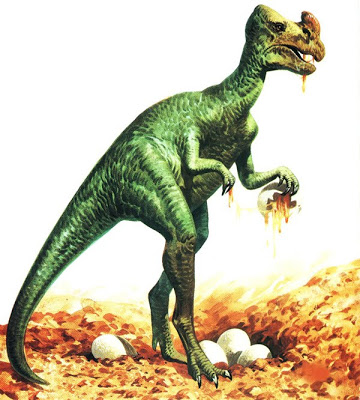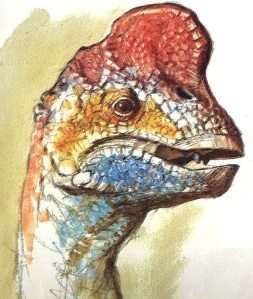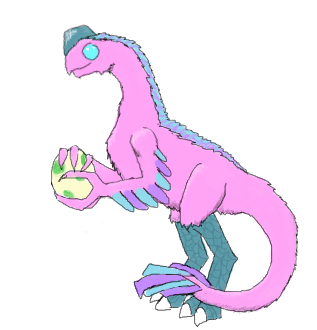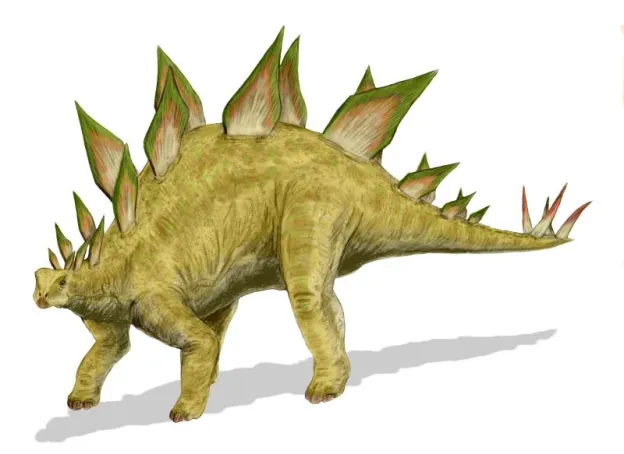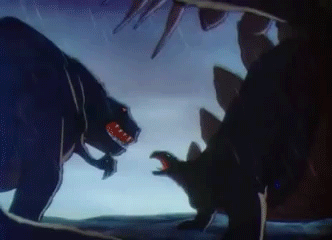So, Pokemon Sword and Shield have an amazing opportunity that Gamefreak shouldn’t pass up. And that opportunity is fossils.
As a fossil maniac, I appreciate the many different fossil Pokemon Gamefreak has designed over the years. Some of them are based on more popular ancient animals, like the T-Rex, and others not as much, like the crinoid and Anomalocaris. I was very disappointed that Pokemon Sun and Moon didn’t introduce new fossil Pokemon. But I can begrudgingly accept this as Hawaii isn’t really known for its fossils. As a string of recent land masses, Hawaii does not have a long biological history. What fossil are preserved are destroyed as the ocean washes away the oldest islands.
But Galar is different because it’s set in England. Not only does England have fossils but it represents the beginnings of paleontology and the birthplace of the word “dinosaur.” Since practically ancient times, humans knew about the existence of fossils but didn’t fully understand what they represented. They could have been mythological beasts or animals once present in the Garden of Eden. It wasn’t until the Enlightenment era that scientists, such as anatomist Georges Cuvier, realized that these fossils belonged to animals that were thousands if not millions of years old. That through gradual change over many, many years, animals come and go and create a succession, of sorts, to the modern era. Even more astonishingly, some of these animals were unlike anything alive today; they were so wild and out there they deserved their own classification.

Ichthyosaurus. Image credit: John Sibbick/Science Photo Library

A Plesiosaur
By the early 1800s, English scientists were pushing the field of paleontology from a curious idea to a serious subject. One notable collector was Mary Anning whose achievements include finding the first Ichthyosaurus (a fish-like reptile), two nearly complete Plesiosaurus (a long-neck swimming reptile), and other fossils such as shells and a Pterosaur. The Plesiosaurus were especially important as only bits and pieces were found until her discovery. These additions continued speculation on what these animals are, or were, and how they fit in Earth’s history.
The curious animals became more comprehensive as new specimens came to light. In 1824, two different fossilized animals were found and described as Megalosaurus and Iguanodon. These animals, along with the aforementioned Ichthyosaurus and Plesiosaurus, were the inspiration of English scientist Gideon Mantell’s famous paper titled “Age of Reptiles” where he placed these animals in this era and divided it up into three periods which later became known as the Triassic, Jurassic, and Cretaceous. Just a year after this publication Mantell founded and described another ancient reptile which he named Hylaeosaurus in 1832. However, it wasn’t until 1841 when famed anatomist Sir Richard Owen united Megalosaurus, Iguanodon, and Hylaeosaurus into one branch which he named “Dinosauria,” terrible lizard.
This of course is a rather brief review of Paleontology’s early history. I encourage you to look into as it’s very fascinating. I like the interpretation of Iguanodon as a lumbering, rhino-like giant iguana, to its modern appearance as a gracile, slender animal with a prominent thumb spike. There’s also the Crystal Palace Dinosaurs which was possibly one of the first, large-scale interpretations of ancient animals. The park contains all the previously mentioned animals and more.

While the park dinosaurs were being built, a New Year’s Eve dinner was held inside the still incomplete Iguanodon specimen which is quite frankly, a great way to start the new year!
But I would like to instead pivot back to the matter at hand. The fossil Pokemon of Galar. It would be very remiss of Gamefreak not to include any of these animals as Pokemon Sword and Shield’s fossils. The way I see it we can go down two, neatly packaged, routes.
The first route is to have fossil Pokemon based on Ichthyosaurus and Plesiosaurus with their respective fossils being Tail and Flipper. These two animals lived in the same time period in the same habitat so it wouldn’t be surprising to find fossils of them next to each other. As for typing…well that’s probably the major downside to them.
Rock/Water is the fourth most common dual type combination in Pokemon as of Generation VII. Both of these Pokemon would solidly be in that category (as a side note, I have very mixed feelings about Fossil Pokemon’s Rock typing so we’re ignoring that for now). But would our Pokemon have to be Rock/Water? Sure in Generation I both Kabutops and Omastar were Rock/Water while in Generation III, Armaldo was Rock/Bug and Cradily was Rock/Grass even though their respective animal was definitely aquatic.
With that in mind I would still give the Ichthyosaur Pokemon a Rock/Water typing since it’s just too much like a fish. It fits it so well! Yet for our Plesiosaur Pokemon I think we can give it Rock/Dragon without batting an eye. Just like Armaldo it could still learn Water attacks but it would stay close to home with its dual typing. But mark my words!!! If it wasn’t for the Rock requirement our Plesiosaur would be Water/Dragon easily and it would be soooooo gooooood.
Let’s turn our attention to our three English Dinosaurs; Megalosaurus, Iguanodon, and Hylaeosaurus. Hmm…right away I can see a problem…there’s three of them. Now you could do a scenario where there’s two “regular” fossils and one “special” one like in Generation I but I don’t think we have to worry about that. Megalosaurus is a therapod dinosaur. A very iconic group of dinosaurs who were (about 99% of the time) carnivorous and bipedal. Some had small heads and long arms, others had large heads and short arms but they all had similar body plans. And as I’m sure you folks can see where I’m going with this, we already have a therapod Pokemon, Tyrantrum.

Left, a modern interpretation of Megalosaurus. Right, the mid-1800’s interpretation of Megalosaurus. Image credit: Mark Garlick/University of Warwick.
Unfortunately, as best as we can tell, Megalosaurus was a rather “average” looking therapod. Nothing wrong with that but it doesn’t really stand out compared to the more outlandish therapods like Spinosaurus or Therizinosaurus. And although Gamefreak doesn’t mind reusing animals multiple times (and even using a Monkey Grass Pokemon twice!), I think it would be a waste of time for them to reuse a standard therapod when the paleontological record offers so much more.
As a side note, it would be balls awesome if Gamefreak gave us Megalosaurus but based on its original interpretation as a quadrupedal carnivore with a fat-crocodile mouth and a dragging tail. It would be kind of horrifying and sad for the Megalosaurus Pokemon but really cool! Like, the lore would be that due to an incomplete skeleton, the reconstructed dinosaur could not resume its original shape and instead pieced together what it had to make its now misaligned form. That would be wild.

Iguanodon
Anyway, that leaves us with Iguanodon (Thumbspike Fossil) and Hylaeosaurus (Plate Fossil) and luckily we haven’t had dinosaurs based on them yet! This is perfect and their body variation can really lend itself well to some cool type combinations. First, Iguanodon, I imagined three different type combos with them. Rock/Normal would be my initial suggestion as these guys are one of the most common dinosaurs you can find, they were basically the elk of the dinosaur world. But you also have that trademark thumbspike that is so well known on Iguanodon that you just have to use it somehow. Perhaps as an electrical rod? So maybe Rock/Electric? Maybe it can be used to inject poison into its foes so Rock/Poison? Any of these three suggestions would be interesting.
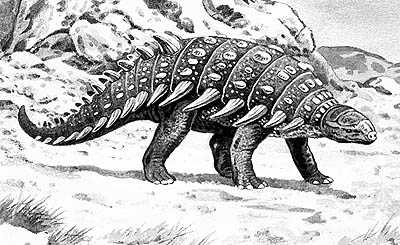
Hylaeosaurus
As for Hylaeosaurus, the armor plating, trademark of all Ankylosauria, immediately suggests a Rock/Steel type which is a nice fallback. Hylaeosaurus also had spikes protruding from its sides which suggests a porcupine-esque defense so Rock/Poison would be delightful. I could also imagine Gamefreak throwing a curveball and making it Rock/Fire similar to how they made Aurorus Rock/Ice.
If I had my druthers I would make Fossil Pokemon out of Iguanodon and Hylaeosaurus and make the Plesiosaur a modern Pokemon. This works very well thanks to the folklore surrounding Nessie and the occurrence of modern fossil-based Pokemon like Aggron and Tropius. And the Plesiosaur can be Water/Dragon which would be great!
So there you have it. Will it happen? I’m banking on no unfortunately. Although Gamefreak has been doing very well lately designing Pokemon that are inspired by their respective region, I can’t imagine them going the extra mile to put that paleontology flavor in. Now a Pokemon based on the Loch Ness Monster? Sure, I can buy that but I won’t be holding my breath. We shall see. Fingers crossed!

